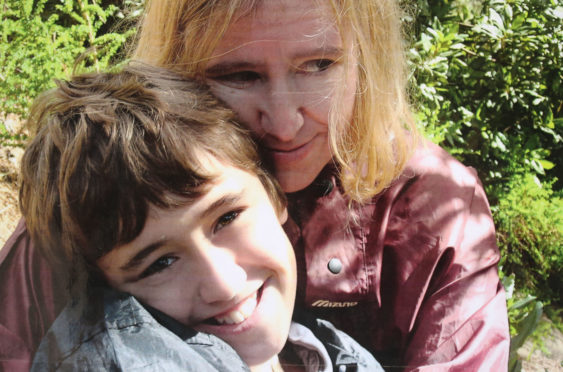Old photographs are bitter sweet, a captured moment lost forever.
Inevitably, things are different. The glossy dark hair in which a few stray greys have now taken up residence. And there, lurking at the back is that beloved person, once in the frame but no longer. And your smile! See how much freer and more spontaneous it is before the challenges that life inevitably brings: bereavement, divorce , illness, tragedy.
Photographs remind us so viscerally that permanence is an illusion. Things change.
Often, change seems like loss, a mini death. But sometimes, it is rebirth. All of which leads me to “Jihadi Jack”, the 23-year-old who left his middle-class Oxford home at the age of 18 in 2014 to go to Syria. An Islamic convert, Jack Letts joined Isis but now languishes in a Kurdish jail. Last week, his parents were convicted of “supporting terrorism” by sending their son money when he was broke and they wanted him to come home. So much in this sad story merits closer scrutiny.
Three photographs. In the first, Jack Letts is a boy. His smile is open but a little shy, the innocence of childhood still inhabiting his eyes. His arm snakes round his mother, his head bent in towards her. He says now that he misses his mum and in this picture, the roots of their closeness are evident. His father is beside them, the arm of another little boy just evident round his father’s waist. A normal family. Jack longs to see his parents. “I really want to see them more than I’ve ever wanted to in my whole life.”
Sometimes, in the midst of life’s darkness – and it doesn’t get much darker than terrorism, the cruelty of death and destruction wreaked on the innocent – it is worth looking for any kernel of humanity. It is, at least, something to work with. In this story, it surely comes in the parent-child relationship. Was the prosecution of John Letts, and his wife Sally Lane, truly worth it? Did they need punishment for doing what every loving parent tries to do: get their daft child out of the sorry mess they have dug themselves into? Why? Because they love them, and more, they know what is worth loving in their child, no matter the defects. They have been there through every developmental stage and they know more change lies ahead. “A father does not give up on his son and I will never give up on Jack,” says John Letts.
Photograph two. Jack is a young man now, a teenager in jeans and tee-shirt standing in Syria, the white poster boy for Isis. The angelic, scrubbed little boy has disappeared. The hair has darkened, lengthened, and he sports a scruffy beard. The rebel phase. “ I am right and invincible. I don’t need you.” Every parent knows it and sighs. The cockiness of it is exasperating. All you can do is wait, really, and put your hands out to catch the inevitable falling body. Just like Jack’s parents did.
Photograph three. This is Jack now, with shorn hair and shadows under his eyes. He is closer to the little boy than the teenager, but the eyes do not have the child’s clarity. They are dark and haunted. Letts suffers from Obsessive Compulsive Disorder and his father says it made him vulnerable to manipulation. When he converted, he used to say his Islamic prayers over and over, fearing he would go to hell if he made mistakes.
In a video interview, Jack’s cockiness has disappeared. “I made a big mistake,” he says. His interviewer says there’s not much appetite for giving him a second chance. “I probably wouldn’t give me a second chance either,” he replies. In a 23-year-old, there is something tragic about that resignation.
The British Government’s role is the most worrying, yet least examined, aspect of this story. In 2016, Jack worked with counter terrorist expert, Hanif Qadir, who was appointed by the Home Office. They devised a plan for Letts to return home, face justice, and “open himself up to rehabilitation”. The poster boy repents? What a coup. “It would have worked,” says Qadir. But the government pulled the plugs.
There are bad people, and people who get into bad situations and we need to differentiate. Especially when the person is 18 and has mental health issues. Life changes; it is not a photograph. In that change there is birth and death, growth and decay. Above all, there is the possibility of redemptive change. Refusing to allow for that is destructive of our society, but also of ourselves. The author and theologian Lewis Smedes once wrote that when you release a person from their wrongdoing, the prisoner you release is yourself.
“Forgiving does not erase the bitter past,” he wrote. “A healed memory is not a deleted memory. Instead, forgiving what we cannot forget creates a new way of remembering.” It is surely in those new ways of remembering, new ways of being, that life’s hope truly emerges.
Catherine Deveney is an award-winning investigative journalist, novelist and television presenter











